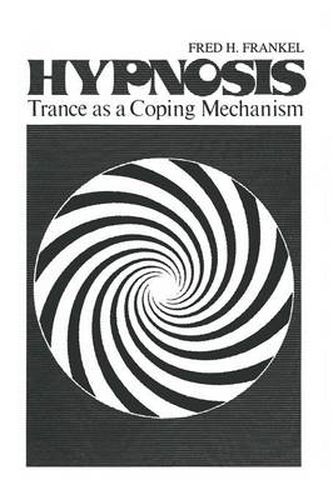Readings Newsletter
Become a Readings Member to make your shopping experience even easier.
Sign in or sign up for free!
You’re not far away from qualifying for FREE standard shipping within Australia
You’ve qualified for FREE standard shipping within Australia
The cart is loading…






This title is printed to order. This book may have been self-published. If so, we cannot guarantee the quality of the content. In the main most books will have gone through the editing process however some may not. We therefore suggest that you be aware of this before ordering this book. If in doubt check either the author or publisher’s details as we are unable to accept any returns unless they are faulty. Please contact us if you have any questions.
Hypnotism, asserted Durand de Gros in 1860, provides psychology with an experimental basis, from which point on it becomes a positive sci ence and takes its place in the larger sphere of animal physiology.
At the time it was written, this pronouncement was perhaps more wish than fact, but it was accurately prophetic of many of the developments in clinical psychiatry in the decades that lay ahead. Charcot was the pioneering pathfinder. With his colleagues at the Salpetriere in Paris, he employed hypnosis as an investigative tool to explore the psychology of patients with major hysteria. The discovery of the role of unconscious pathogenic ideas in the production of hysterical symptoms provided a basis for theoretical formulations that reached an apogee in the voluminous writings of Pierre Janet. For Janet, dissociation of mental functions became a central concept, and at the turn of the century, numerous clinical investigators in Europe and America were engaged in a study of its mechanisms and clinical mani festations. Among those early investigators was Sigmund Freud, who after a visit to Charcot’s clinic, initially turned his attention to dissociative phenomena. His interest, however, was soon drawn to the nature and source of the dissociated (repressed) mental contents and away from the mechanism of dissociation itself.
$9.00 standard shipping within Australia
FREE standard shipping within Australia for orders over $100.00
Express & International shipping calculated at checkout
This title is printed to order. This book may have been self-published. If so, we cannot guarantee the quality of the content. In the main most books will have gone through the editing process however some may not. We therefore suggest that you be aware of this before ordering this book. If in doubt check either the author or publisher’s details as we are unable to accept any returns unless they are faulty. Please contact us if you have any questions.
Hypnotism, asserted Durand de Gros in 1860, provides psychology with an experimental basis, from which point on it becomes a positive sci ence and takes its place in the larger sphere of animal physiology.
At the time it was written, this pronouncement was perhaps more wish than fact, but it was accurately prophetic of many of the developments in clinical psychiatry in the decades that lay ahead. Charcot was the pioneering pathfinder. With his colleagues at the Salpetriere in Paris, he employed hypnosis as an investigative tool to explore the psychology of patients with major hysteria. The discovery of the role of unconscious pathogenic ideas in the production of hysterical symptoms provided a basis for theoretical formulations that reached an apogee in the voluminous writings of Pierre Janet. For Janet, dissociation of mental functions became a central concept, and at the turn of the century, numerous clinical investigators in Europe and America were engaged in a study of its mechanisms and clinical mani festations. Among those early investigators was Sigmund Freud, who after a visit to Charcot’s clinic, initially turned his attention to dissociative phenomena. His interest, however, was soon drawn to the nature and source of the dissociated (repressed) mental contents and away from the mechanism of dissociation itself.